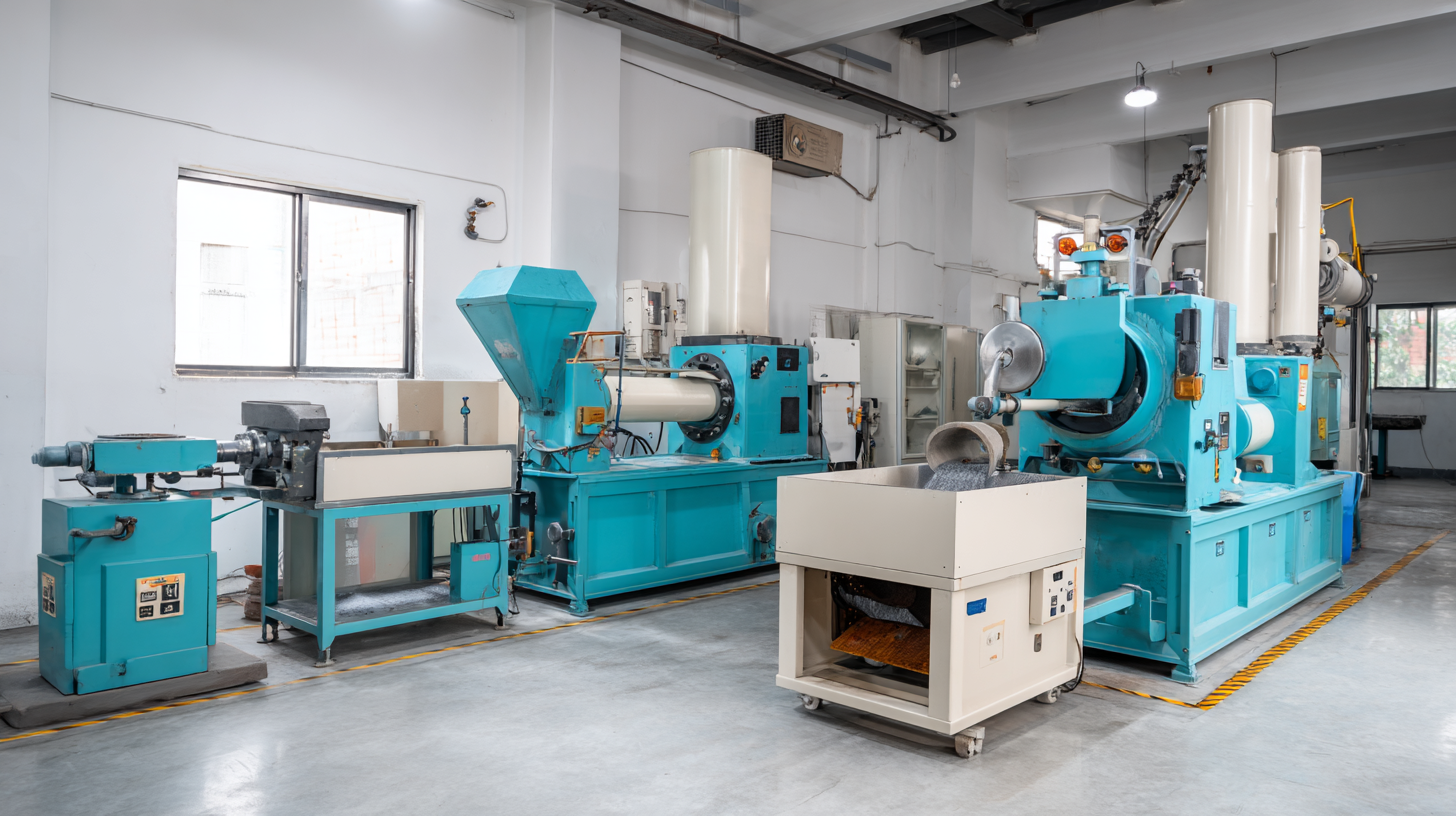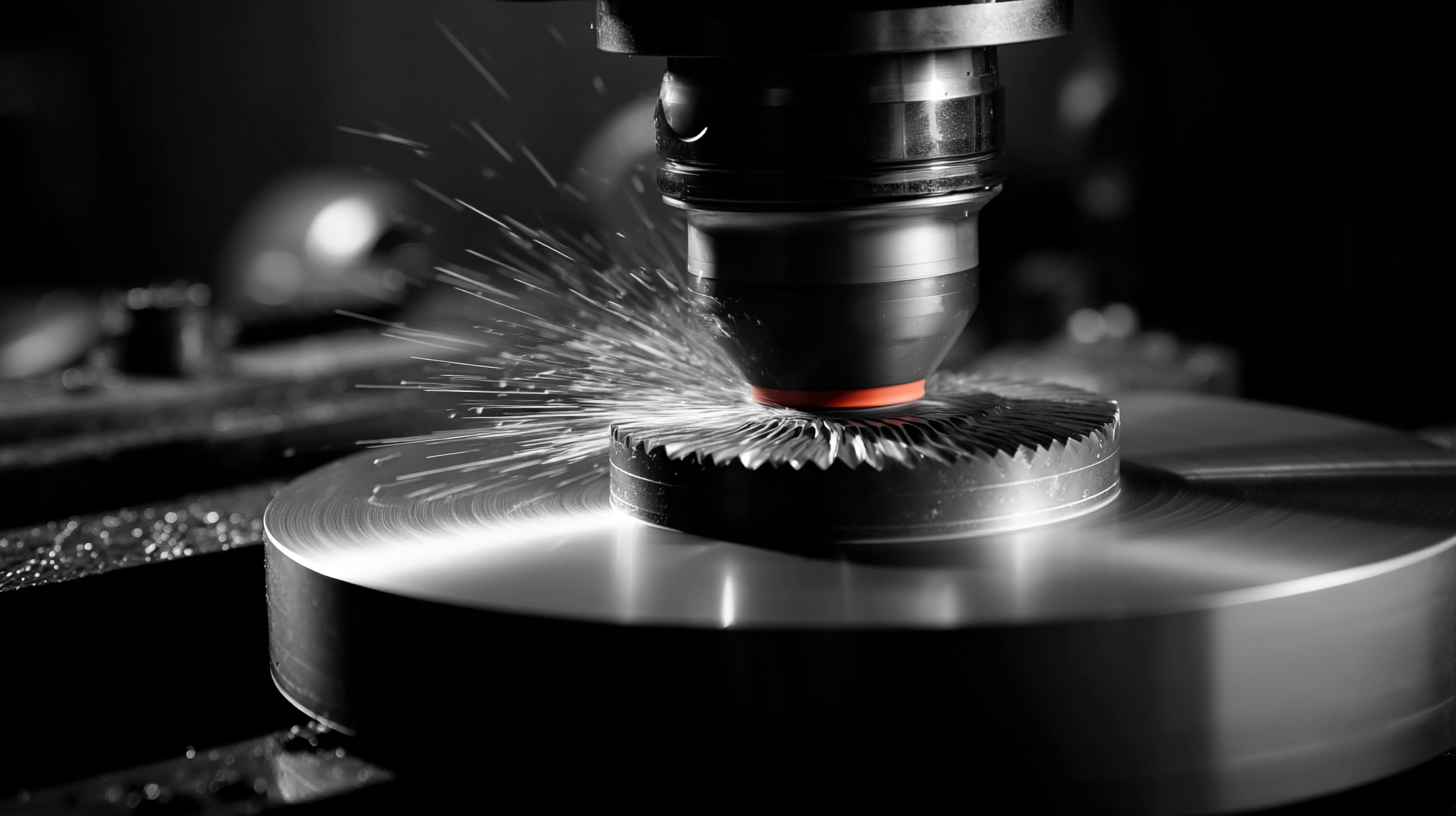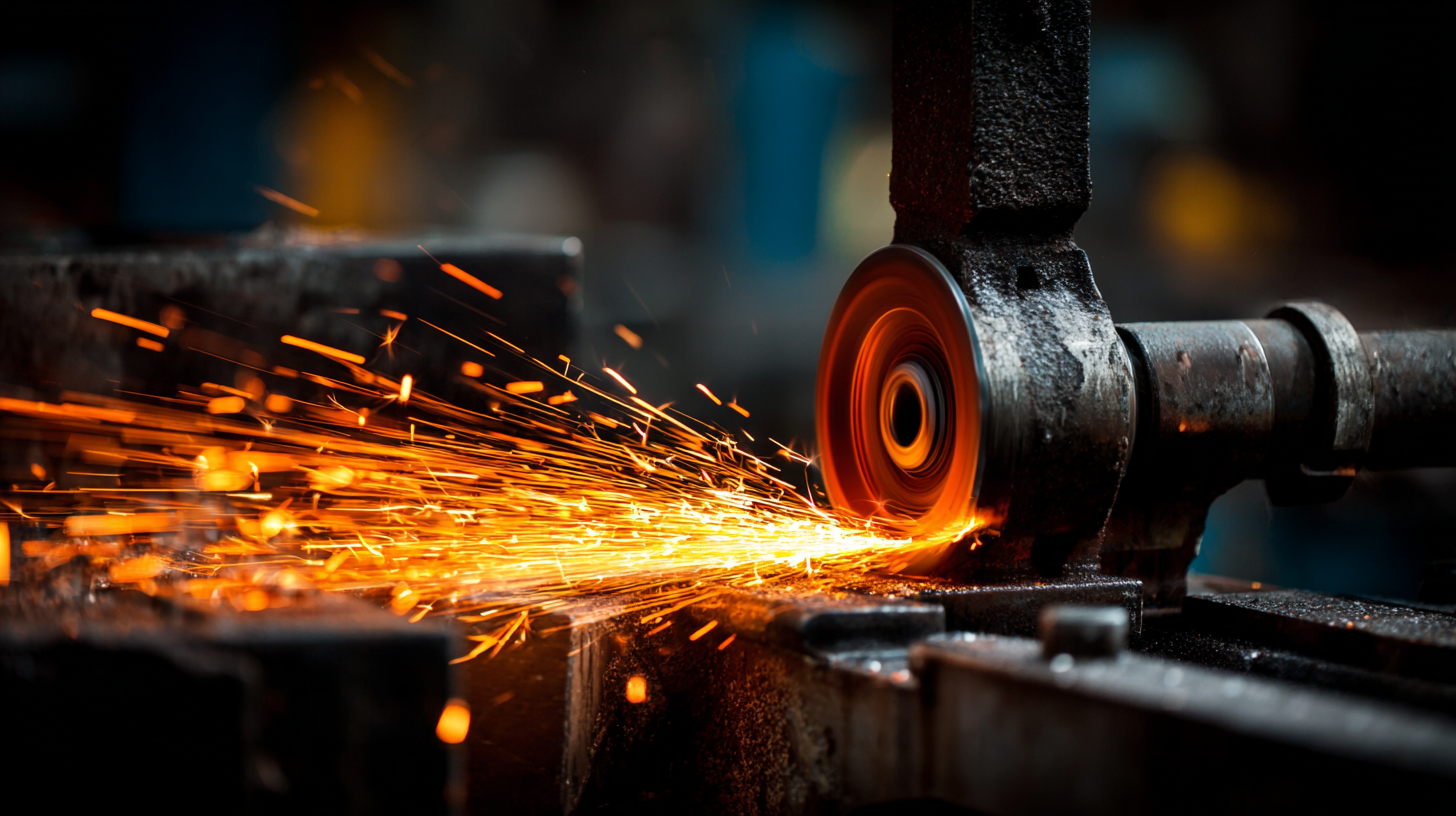You know, the food processing industry is changing pretty fast, especially when it comes to chocolate production. Take the raw material grinding machine, for instance—it’s super important for getting everything just right. A recent market study showed that the global chocolate machinery market is expected to hit around $5.7 billion by 2025. That’s mainly due to the rising demand for top-notch chocolate and the need for smoother production processes. Chengdu LST Science And Technology Co., Ltd is really on top of this, offering solid solutions for chocolate making and packing. They get how crucial advanced machinery is for nailing grinding performance. If we dive into the specs of the best raw material grinding machines, it’s fascinating to see how fresh designs and new technologies are really elevating the efficiency and output of chocolate production lines. This blog’s here to dig into those specs and reveal what manufacturers need to keep up in this competitive market.

You know, the complex world of international trade rules really has a big impact on the market for raw material grinding machines. Lately, with countries like China putting some serious export restrictions in place, it's not just throwing a wrench in the supply chain; it’s also raising some serious questions about how sustainable those industries are that rely on these machines. Manufacturers are really feeling the heat when it comes to finding the essential materials they need, and honestly, the pricing and availability are changing so fast it’s pretty wild. Given that China has a firm grip on a lot of critical mineral supplies, it’s clear companies need to rethink their procurement strategies to manage risks better.
So, what can they do to navigate these tricky waters? Well, one smart move is to diversify their suppliers. That way, they’re not putting all their eggs in one basket with just one country. Staying in the loop about geopolitical news that could shake up trade is super important too. On top of that, investing in cutting-edge grinding technologies can really ramp up efficiency and cut down on waste. This could give businesses a leg up, even when material costs are all over the place.
And let’s not forget, it’s essential for businesses to get ahead of the game when it comes to understanding regulatory affairs. Keeping up with any upcoming trade changes can really help companies adjust to new tariffs and export regulations, which ultimately means they can build more resilient strategies in this ever-changing market landscape.
So, when you’re in the market for a top-notch raw material grinding machine, it’s super important to get a grip on those key technical specs that really meet export standards. You see, these specs don’t just make sure the machine runs well; they also keep it safe and compliant with international quality regulations. Typically, a high-performance grinding machine will come with some pretty advanced motor technology, which not only boosts how well it works but also helps save on energy. Plus, if the motor has variable speed control, you can tweak settings just right based on what material you’re working with. So, trust me—this really helps in getting the best grinding results possible.
Another thing to consider is the build quality and materials of the grinding machine itself. The best ones are often crafted from wear-resistant materials, which mean they’ll last longer and save you money on upkeep. Don’t forget about features like optimized airflow and solid dust collection systems; these are crucial for keeping your workspace nice and clean. By including these specs, manufacturers can make machines that not only perform like champs but also stick to those strict export guidelines, making them a good fit for global markets. So, if you choose a raw material grinding machine with these specs, you’ll likely see a nice boost in productivity as well as compliance in your operations.

Let's talk about raw material grinding machinery for a second. You know, when it comes to this stuff, certifications really matter—like, a lot! The global market for ISO certification is expected to balloon to $18.59 billion by 2025, and it could hit an insane $57.48 billion by 2033. So, if manufacturers want to stay in the game, showing they comply with international standards is absolutely essential. That whopping 15.2% annual growth rate really highlights how much folks are looking for certified grinding equipment. It just gives customers that peace of mind, knowing they’re getting something reliable and top-notch.
And then there’s the whole thing about certifications for industries like aerospace and life sciences—think ISO and FAA certifications. The processes for testing biocompatibility and meeting regulatory standards are no joke! They really ensure that these grinding machines are safe and up to snuff, which is super crucial in fields where every single detail counts.
**A little tip for you:** When you’re on the hunt for a raw material grinding machine, definitely check for those ISO and other relevant certifications. Trust me, it’ll save you a headache down the road! And getting a grasp on the different testing methods out there can help you pick the right equipment for what you need. Look for suppliers that are genuinely committed to these certifications, because that’s a pretty good sign they’re trustworthy and dedicated to quality.
| Specification | Details |
|---|---|
| Machine Type | Ball Mill |
| Power Consumption | 75 kW |
| Grinding Capacity | 1.5 tons/hour |
| Material Size Input | |
| Final Product Size | |
| Weight | 2000 kg |
| Operating Environment | Indoor, temperature-controlled |
| Certifications | ISO 9001, CE |
| Maintenance Interval | Every 500 hours of operation |
You know, when it comes to grinding machines for raw materials, the quality of what's going through them really makes a huge difference. When you use top-notch materials, you usually end up with finer particle sizes and overall better performance—this is super important in industries like food and pharmaceuticals. Let’s say you opt for high-grade raw materials; this can really help reduce wear on the grinding parts, which in turn means your machines can last longer and work more efficiently. On the flip side, if you’re using low-quality stuff, you might find uneven wear, contamination issues, and the annoying need for maintenance way more often than you’d like.
Plus, there’s the whole compliance angle to consider. The quality of your materials is crucial for meeting industry standards. Manufacturers really need to make sure the raw materials tick both the quality boxes and the safety regulations. This is especially important in sectors like food production, where any slip-up in material quality can lead to serious health risks and some hefty fines. So, investing in high-quality raw materials isn't just about making your grinding machines perform better; it’s also about keeping everything above board and maintaining the integrity of the final products. It’s really a win-win situation!
You know, the global market for certified raw material grinding solutions is really taking off! It's pretty fascinating how various factors—like tech advancements and a growing demand for top-notch materials in different industries—are driving this growth. Recent research shows that the Floor Grinding Machines market is split into categories based on floor types, such as marble, limestone, concrete, and granite. And guess what? The buzz is that the demand for these machines is on the rise, reflecting a bigger trend in the construction and manufacturing world that's all about finding efficient and reliable grinding solutions.

On top of that, there are some exciting developments in related areas, like recycled rubber products. There's this project report on a Recycled Rubber Products Manufacturing Plant that dives deep into the setup and cost analysis, which is a goldmine for potential investors looking to tap into this market. Plus, the Diamond Tool market is expected to see some serious growth by 2034, which really highlights how crucial grinding applications are for improving material processing and boosting operational efficiency.
With all these changing market dynamics, it’s clear we really need certified solutions that not only hit performance targets but also stick to sustainable practices. It's all part of that global shift towards more responsible manufacturing, right?
In the quest for optimizing chocolate quality, the importance of chocolate conche machines cannot be overstated. These machines play a crucial role in the refinement of chocolate mixtures, blending essential ingredients such as cocoa butter, cocoa powder, cocoa mass, sugar, and milk powder to create a smooth, rich texture. The process of conching is vital as it helps to reduce particle size, improve flavor development, and enhance the overall mouthfeel of the final product. Insights from global confectionery market reports highlight that chocolate manufacturers increasingly rely on advanced conching technology to maintain competitive quality standards.
The dynamics of the global confectionery market indicate a growing emphasis on high-quality chocolate. With consumers becoming more discerning about the taste and texture of their chocolate products, conche machines have emerged as indispensable tools in meeting these demands. State-of-the-art conching processes allow for better control over the refinement stages, enabling chocolatiers to achieve the desired consistency and flavor profiles. As trends shift towards premium and artisanal chocolates, the importance of investing in high-performing conche machines will only continue to rise, ultimately shaping the future of chocolate production.
: Key technical specifications ensure the machine's efficiency and compliance with international safety and quality regulations, which are crucial for export standards.
Advanced motor technology enhances operational capabilities while minimizing energy consumption, allowing for precise adjustments based on the material being processed.
High-quality machines are often made from wear-resistant materials that extend their lifespan and reduce maintenance costs.
High-quality raw materials yield finer particle sizes and better overall performance, while subpar materials can lead to uneven wear and increased maintenance needs.
Raw materials must meet quality benchmarks and adhere to safety and regulatory requirements, which is vital in sectors like food production to prevent health risks and financial penalties.
The demand is influenced by advancements in technology, the need for high-quality materials across industries, and the growth in sectors like construction and manufacturing.
The market for Floor Grinding Machines is anticipated to rise, correlating with broader trends in the construction and manufacturing sectors seeking efficient grinding solutions.
The projected setup and cost analysis for recycled rubber products indicate a growing interest in value capture within manufacturing, highlighting the importance of grinding applications in this area.
It underscores the essential role that grinding applications play in refining material processing and enhancing operational efficiency.
The demand for certified solutions is driven by the necessity to meet performance benchmarks while adhering to sustainability practices aligned with global responsible manufacturing movements.












